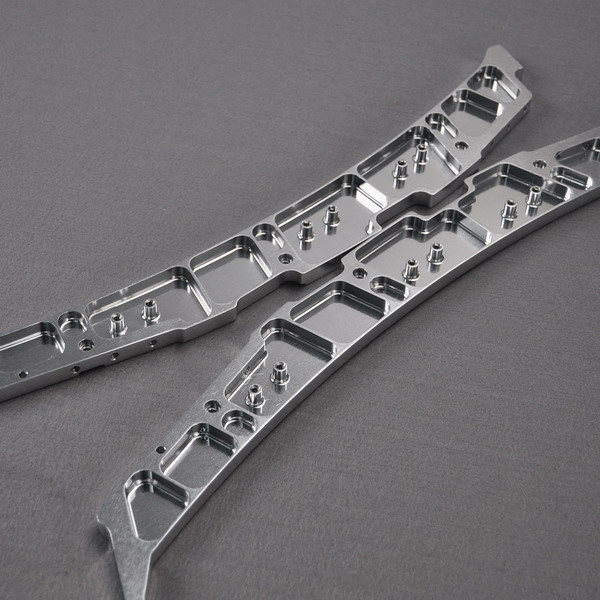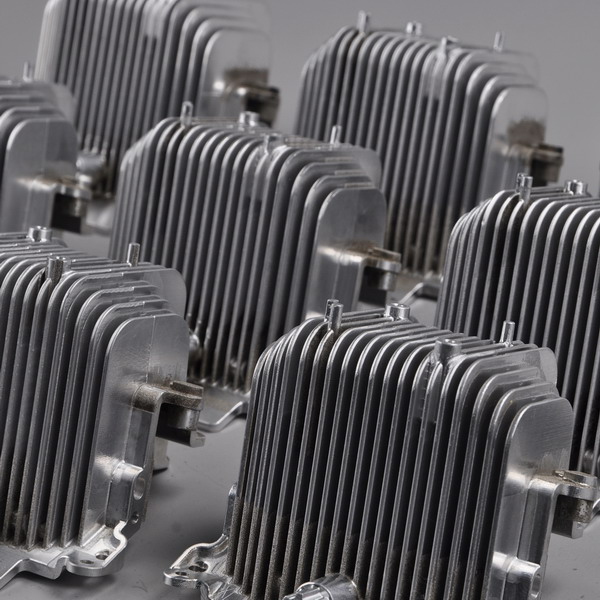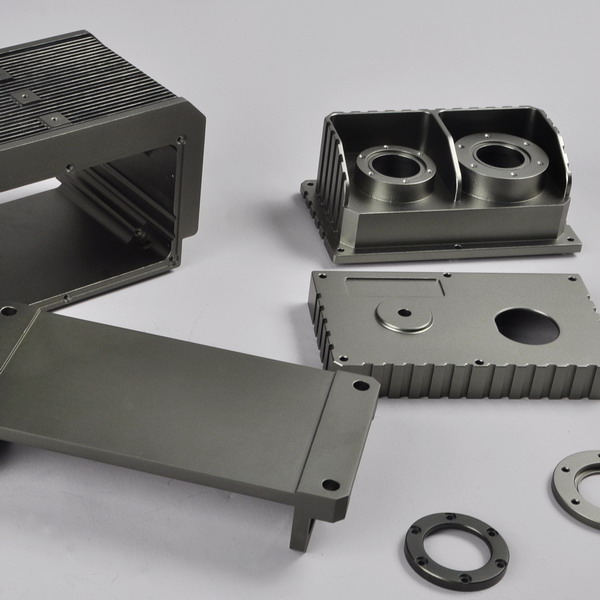Welding is an important process in metal machining services, but have you ever thought about alternate methods to join metals without welding? Joining metals without welding is a process that can be done through a variety of methods. In this blog post, we will take a look at three common methods of joining metals without welding. These methods are riveting, brazing, and soldering. Each method has its own strengths and weaknesses, so it is important to choose the right method for the job. Let’s take a closer look at each method.
How to join metals without welding?
There are a few ways to join metals without welding. This can be helpful when working with certain types of materials or if you don’t have the equipment or experience to weld.

1. Bonding the metals with glue
Bonding the metals with glue is a process that can be used to join two pieces of metal together. This method is often used when welding is not an option, or when it is not possible to weld the metals together.
To bond the metals together using glue, first, a layer of adhesive is applied to one of the surfaces to be joined. Then, the two surfaces are pressed together and held in place until the adhesive sets. The bonding process can be completed by either heating the adhesive (if it is a thermal adhesive) or by allowing it to cure on its own (if it is a UV-curable adhesive).
There are several advantages to bonding metals together with glue. First, this method does not require the use of heat, which can be a disadvantage of welding. Second, bonding does not require the use of any special equipment, making it a more accessible option for many people. Third, this method can be used to join dissimilar metals together, which is often not possible with welding. Finally, bonding provides a stronger joint than welding, making it ideal for applications where strength is critical.
There are some disadvantages to this method as well, however. First, the adhesive must be chosen carefully to ensure that it is compatible with the metals being joined. Second, the joint must be cleaned thoroughly before the adhesive is applied to avoid contamination. Third, if not done correctly, the joint may be weaker than one made with welding. Fourth, this method is often more time-consuming than welding. Finally, it is important to note that the joint created by bonding will not be as strong as one made with welding if the metals being joined are not of the same type.
2. Brazing
Brazing is a joining process in which two or more pieces of metal are joined together by melting and flowing a filler metal into the joint, bonding the pieces together. Brazing is distinguished from welding by the fact that the filler metal does not melt and become part of the base metals being joined; rather, it forms a metallurgical bond with them. The filler metal used in brazing has a lower melting point than the base metals being joined, so it can be melted and flowed into the joint without causing damage to the base metals. Brazing is often used to join dissimilar metals, such as aluminum to steel because it produces a stronger joint than would be possible with adhesive bonding or mechanical fastening.

2. Soldering
Soldering is a process in which two or more metals are joined together by melting and flowing a filler metal (solder) into the joint. The filler metal has a lower melting temperature than the base metals being joined, so it can be melted and drawn into the joint by capillary action. Adding solder to a joint increases its strength and electrical conductivity.
Soldering is used in electronics to create electrical connections between components. It is also used in plumbing and other types of construction to join pipes and other metal fixtures. The soldering process involves four basic steps: heating, applying solder, cooling and cleaning. Heating the joint melts the solder so that it can flow into the gap between the two pieces of metal. Applying solder to the joint creates a bond between the metals. Cooling the joint solidifies the solder and creates a strong connection. Cleaning the joint removes any excess solder and flux. Proper soldering technique is important in order to create a strong, reliable connection.
The base metals must be clean and free of oxide before soldering. The soldering iron must be the correct size and temperature for the job. Too much heat can damage components or cause the solder to flow into places where it is not wanted. too little heat will not allow the solder to flow properly and will result in a weak connection. Applying too much solder can also cause problems. Excess solder can make it difficult to insert components into PCBs (printed circuit boards) or connect wires to terminals. It can also cause solder bridges, which are electrical shorts between two conductors.
Soldering is a skilled process and takes practice to master. There are four main types of soldering: hard soldering, soft soldering, brazing, and welding. Hard soldering uses a filler metal with a melting temperature above 400°C (752°F). This type of soldering is used for joining ferrous metals like iron and steel. Soft soldering uses a filler metal with a melting temperature below 400°C (752°F). This type of soldering is used for joining non-ferrous metals like copper and aluminum. Brazing uses a filler metal with a melting temperature above 700°C (1,292°F). This type of soldering is used for joining metals with a high melting point, such as stainless steel. Welding uses heat and pressure to join metals together. This type of soldering is used for joining metals that are difficult to solder, such as cast iron. Welding is the most permanent form of soldering and is often used in applications where strength and reliability are critical, such as in the automotive industry.
3. Riveting
Riveting is a process of joining two or more materials together using heat, pressure, or both. This can be done by using a machine to apply the force, or by hand. Riveting is often used in construction and manufacturing, as it provides a strong joint that can withstand a lot of force. Rivets come in various sizes and shapes and are made from different materials depending on their intended use.
Riveting works by heating up the material until it is soft enough to deform, and then applying pressure to shape it as desired. The material will then cool and harden, creating a strong bond between the two pieces. Riveted joints are typically stronger than those made with other methods such as welding or bolting. There are two main types of rivets: solid and hollow. Solid rivets are made from a single piece of material, while hollow rivets have a hole in the center. The type of rivet that is used depends on the application. For example, solid rivets are often used in structural applications where high strength is required, while hollow rivets are typically used for lighter-duty applications. Riveting is a simple process that can be done quickly and easily with the right tools. Riveted joints are strong and durable, making them ideal for a variety of applications.
What is the need for joining metals without welding?
The need for joining metals without welding is often necessary in cases where welding is not possible or practical. There are many situations where welding simply cannot be used to join two pieces of metal together, such as when the metal is too thin, when the metals are dissimilar, or when the joint needs to be highly flexible. In these cases, other methods of joining metals must be used. Some of the most common methods of joining metals without welding include bolting, riveting, and fastening with screws and nails. These methods are typically much less permanent than welding, but can still provide a very strong connection between two pieces of metal. When done properly, these alternative methods of joining metal can be just as strong as a welded joint.

There are a number of reasons why welding may not be possible or practical in certain situations. In some cases, the metal simply may be too thin to weld. If the metal is too thin, it can melt during the welding process, which can cause the joint to be weak and potentially fail. Additionally, welding two dissimilar metals can often be difficult or impossible. When two dissimilar metals are joined together, they often have different expansion rates when heated. This can cause the joint to become weaker over time as the metals expand and contract at different rates.
Finally, some joints need to be highly flexible in order to accommodate movement or expansion. Welded joints are typically very strong but not very flexible, so they are not well-suited for applications where flexibility is required. There are many situations where welding is simply not possible or practical. In these cases, other methods of joining metals, such as bolting, riveting, and fastening with screws and nails, can provide a strong connection between two pieces of metal.
Conclusion
Using rivets, screws, bolts, and other fasteners is a common way to join metals without welding. Rivets are one of the oldest ways of joining two pieces of metal together and are still used today in a variety of applications. Screws, bolts, and other fasteners are also commonly used to join metals together. Fasteners can be made from a variety of materials, including steel, aluminum, brass, and even plastic. When choosing fasteners for joining metals, it is important to consider the strength and durability of the fastener as well as the compatibility of the materials being joined. Fasteners should also be chosen that will provide adequate clearance for any movement that may occur between the two pieces being joined.